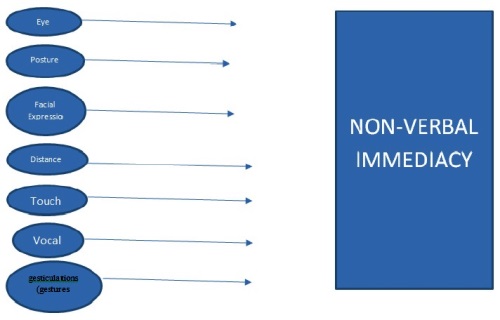Measuring Nonverbal Immediacy Scale (NIS) and its Applicability in Academics: A Cross Cultural Survey
DOI:
https://doi.org/10.54741/ssjar.3.1.5Keywords:
nonverbal immediacy scale(nis), culture, academicAbstract
In this study, we are showing the non-verbal immediacy variables, such as an instructor's posture, facial expressions, distance when interacting with students, touch and gestures, vocal expression, and intents, have a favourable and significant impact on this relationship. The study also showed that across students in Under-Graduate and Post-Graduate programmes, the intention of relationships changes according on gender.
Downloads
References
Alexander, O. (2017). Sikkim claims India's first mixed-criteria UNESCO World Heritage Site. Current Science, 112(5), 893–994.
Chatterjee, S., Saikia, A., Dutta, P., Ghosh, D., Pangging, G., & Goswami, A. K. (2006). Background paper on biodiversity significance of north east india. forests conservation programme. WWF-India, New Delhi.
Connelly, L. M. (2008). Pilot studies. Medsurg Nursing, 17(6), 411-2.
Fast, J. (1970). Body language. Illustrated, Reprinted and Revised by Rowman & Littlefield, 2002.
Gerard, I. N., & Henry, H. C. (1990). How to read a person like a book. Pocket Books.
Hecht, M.A., & Ambady, N. (1999). Nonverbal communication and psychology: Past and future. The New Jersey Journal of Communication, 7(2), 1–12.
http://www.jamescmccroskey.com/measures/nis_s.htm.
Kraut, R. E. (1981). Rosenthal: Skill in nonverbal communication: individual differences.
Mallikarjun, B. (2002). Mother tongues of India according to the 1961 census. Languages of India, 5.
Nierenberg, & Calero. (1990). How to read a person like a book. Rupa & Co.
Parulekar, S.M. (2017). Non-verbal communication a tool for effective corporate training with special reference to Mumbai. Shri Jagdishprasad Jhabarmal Tibarewala University.
Pease, B., & Pease, A. (2004). The definitive book of body language. New York: Bantam Books.
Pedrosa, S. G.M. (1990). Non-verbal Effects on testing. British educational.
Plax, T. G., Kearney, P., McCroskey J. C., & Richmond, V. P. (1986). Power in the classroom VI: Verbal control strategies, nonverbal immediacy, and effective learning. Communication Education, 35, 43-55.
Richmond, V. P., McCroskey, J. C., & Johnson, A. D. (2003). Development of the Nonverbal Immediacy Scale (NIS): Measures of self-and other-perceived nonverbal immediacy. Communication Quarterly, 51, 502-515. doi: https://doi.org/10.1080/01463370309370170.
Roviello, C. (2004). Gesture: nonverbal communication between teachers and students.
Sikkim Government Gazette. (1997). Sikkim.gov.in. Governor of Sikkim.
Sönmez, V. (2007). Ö÷retim ilke ve yöntemleri (Teaching principles and methods). Ankara: AnÕ YayÕncÕlÕk.
Valadez, G. (2001). The gardener's story. Research Journal, 16(3), 305-306.
White, G.B. (2000). Non-verbal Communications: the eye to improved teacher effectiveness. The Delta Kappa Gamma Bulletin, 66(4), 12-16.
Yaffe, P. (2011). The 7% rule fact, fiction, or misunderstanding. Ubiquity.

Downloads
Published
How to Cite
Issue
Section
ARK
License
Copyright (c) 2023 Dr. Bibek Roy Choudhary, Dr. Monu Singh

This work is licensed under a Creative Commons Attribution 4.0 International License.
Research Articles in 'Social Science Journal for Advanced Research' are Open Access articles published under the Creative Commons CC BY License Creative Commons Attribution 4.0 International License http://creativecommons.org/licenses/by/4.0/. This license allows you to share – copy and redistribute the material in any medium or format. Adapt – remix, transform, and build upon the material for any purpose, even commercially.










